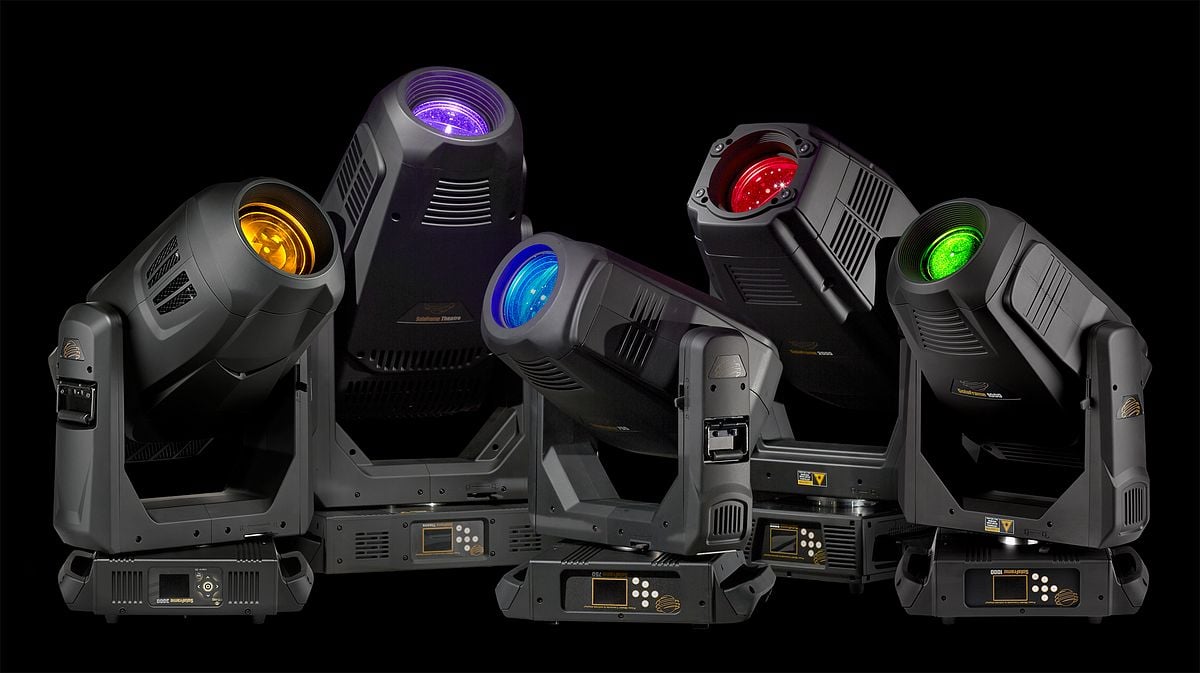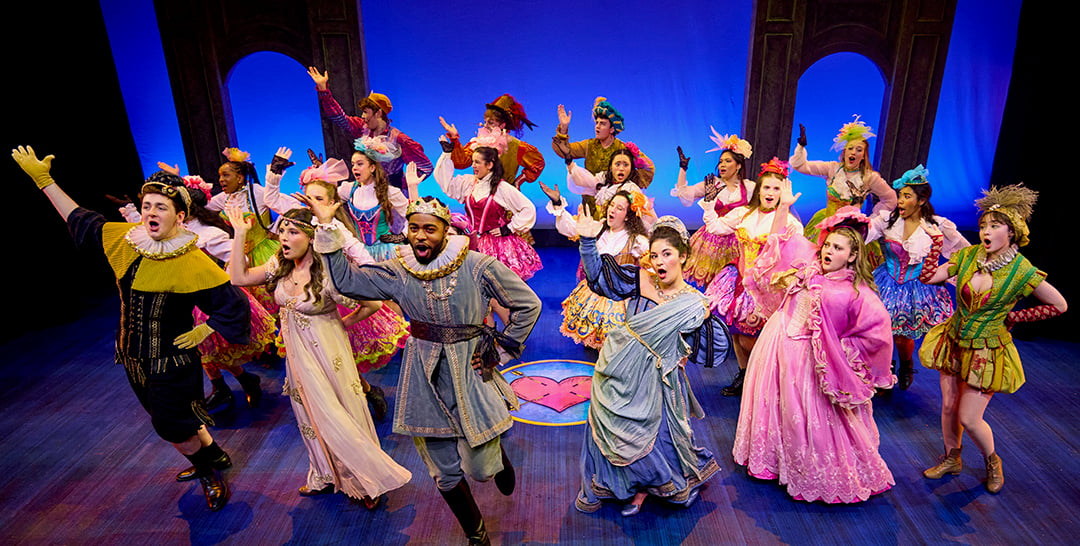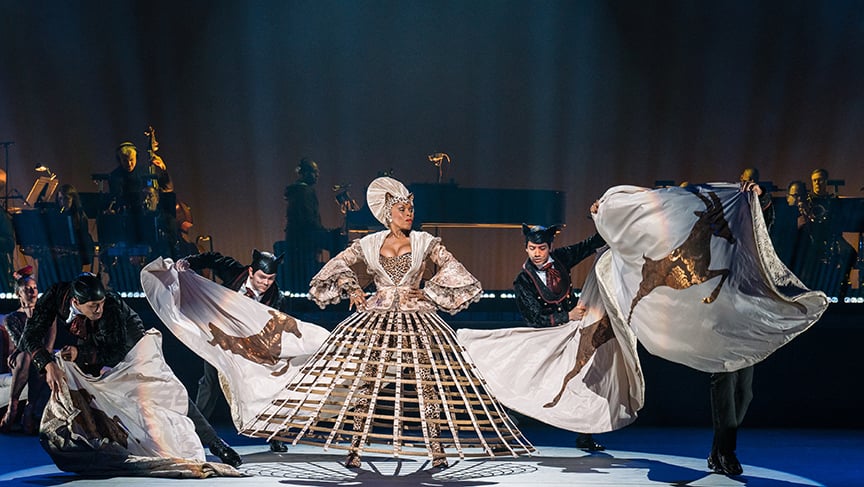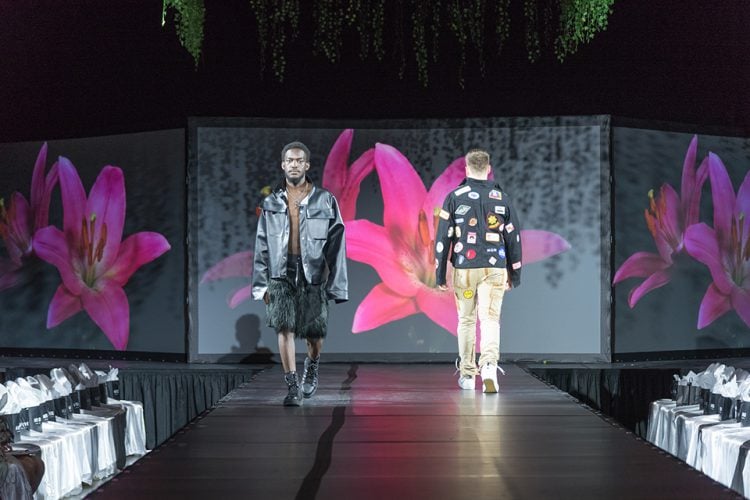As automated lighting technology entered the 21st century, moving yoke LED luminaires became the de facto choice for most designers and applications. While moving mirror fixtures are inherently larger and difficult to hide in a rig, they did afford a much longer optical path.
However, moving yoke lights took over the market due to their size, versatility, and sleek profile. But this meant that nearly all the optics had to be placed into the space of just a few inches to fit in the fixture; needless to say, modern automated luminaire design hinges on making the right engineering decisions for these optical components - they are crucial to the light’s features set and performance.
BACK TO THE SOURCE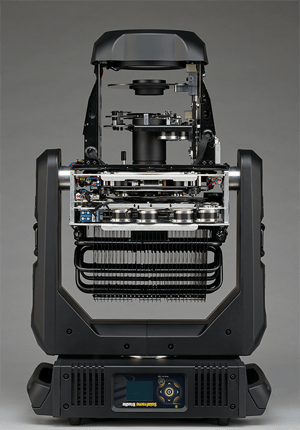
It all begins with capturing the light at the source - the Bright White LED engine, a technology that High End Systems pioneered the use of over twenty years ago. The white light engine has been universally adopted for its ability to produce a rich gamut of colors through the light’s color mixing and fixed color wheel systems. Today, HES framing fixtures employ LED engines ranging from the 290W Lonestar to the latest 1200W engine used in Halcyon Platinum, capable of producing over 70,000 lumens in Boost mode! Additionally, most ETC fixtures offer these engines in both Ultra-Bright and High Fidelity versions, with the Ultra-Bright model producing increased lumen output and the High Fidelity option delivering superior color rendering capabilities.
COLOR MY WORLD
Most manufacturers employ similar optical placement concepts, although there are some exceptions for patents on color mixing positioning. But here in the optical train is where the magic happens – the white light engine focuses the light down into a smaller gate size; at this point, the light focuses down to a cone, and eventually converges and crosses over. This affords the sweet spot for color mixing optics, and is the reason the color-mixing system always comes first after the LED engine. Additive color mixing systems (as used in ETC fixtures such as TurboRay and Talen) take a different approach to color mixing.
As the color mixing system is introduced into the optical path, all the planes of focus should ultimately be as close to the focal point of the engine as possible. The engine and the optical system have one perfect focus point, so engineers strive to get every element as close to that single perfect point as possible; this is why the gobos and framing are packed in as close as they can be to that plane. The closer they are, the better the focus will be between planes.
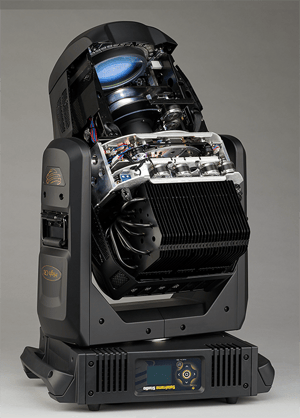 NEXT PRIORITIES – ANIMATION AND GOBO WHEELS
NEXT PRIORITIES – ANIMATION AND GOBO WHEELS
With the remaining optics, more forgiving features are often housed next. For example, animation wheels work well in this spot; even out of focus, operators rarely focus on the animation wheel, it’s being used out of focus behind something else in the path. This simply means that the animation wheel will be able to get in focus, but not in every zoom position.
Gobo wheels are most often next in the path. ETC prioritizes gobo placement based on the purpose and the type of customer; for theatrical customers, the rotating gobo wheels are the most important as designers can position and index the gobos to line up with other elements on stage. For concert LDs, aerial patterns are used on both wheels for mixing and morphing. Furthermore, the gobo wheels are placed as closely as possible for gobo morphing potential.
If the fixed wheel were closer to the framing module, programmers would not be able to frame on the rotating gobo wheel as well, so a fixed wheel is placed before the rotating gobo wheel. The framing module is housed as close to the gobo wheels as possible. The reasoning is that often LDs display a gobo, and then use framing to block that gobo off of curtains, the edge of a stage, or scenery pieces. Once again, the closer optical elements are, the better they can be utilized simultaneously.
FRAMING
The framing shutter assembly is housed next in the optical path, after the rotating gobo wheel assembly. ETC uses a four-plane framing shutter system; other manufacturers use a simpler two-plane system. With a four-plane design, it’s quite important that the blades are all as thin as possible, and all as close to each other for smooth framing focus. Even then, it can be difficult to achieve a perfect focus on four shutters due to the focal depth of the optical system.
FINAL BELLS AND WHISTLES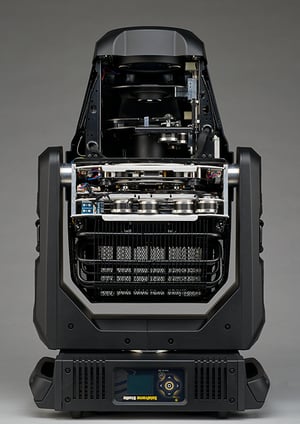
After the framing module, the iris is the next preferred candidate for a spot in the optical path. Although there are some benefits to placing an iris near the gobos, it negatively affects all the priorities listed in the above paragraph. So, there’s not a huge need to prioritize placing the iris between the framing and gobo modules. But iris and framing can be used together, utilizing the iris as a handy fifth frame.
Focus and zoom lenses are placed next, with one of the caveats being that the next most desirable features would be frost and prisms; these should be housed between the zoom and focus lenses, but there’s not very much space to work with! Often the frost and prisms are placed inbetween these lenses, and when they are not enabled, the zoom and focus ranges give maximum movement, but when they are engaged the zoom and focus ranges will adjust to the physical limits imposed by the introduction of new optical devices.
To briefly summarize, it’s important that the color mixing system and color wheel be as far away from that focus plane as possible, and that everything else be as close to that focus plane as possible. Finally, in the world of smaller, brighter, lighter moving lights, any space is the enemy; this is the challenge in automated fixture design.
REVISIT THE PATH
With so much technology used in these automated LED fixtures, savvy LDs, programmers, and service technicians can gain a lot from an understanding of how each of these elements influences their operation and performance, as well as fixture firmware updates, console profiles, troubleshooting, etc. But this should set you down the right path!
- Engine
- Color Mixing, color wheel
- Animation
- Gobo wheel 2, often fixed
- Gobo wheel 1, often rotating
- Framing
- Iris
- Focus lens system - often contains many lenses
- Frost and prisms
- Zoom lens system - often contains many lenses
- Front objective lens


